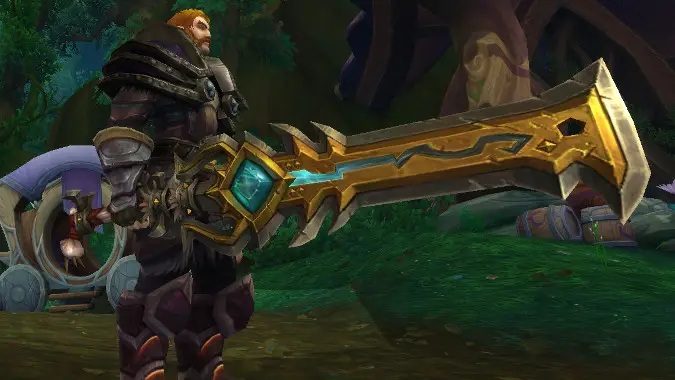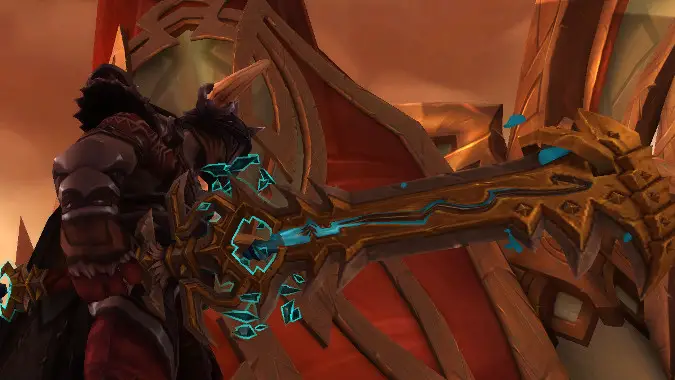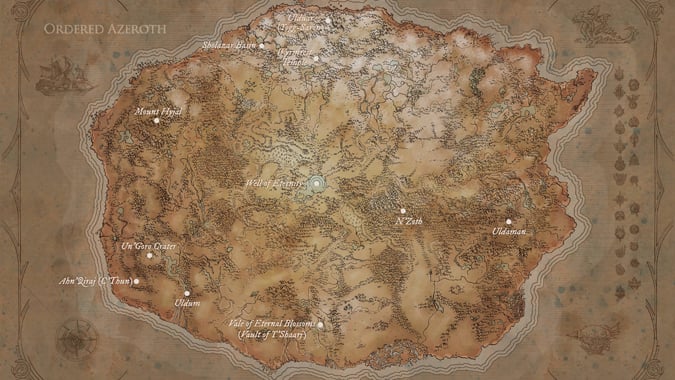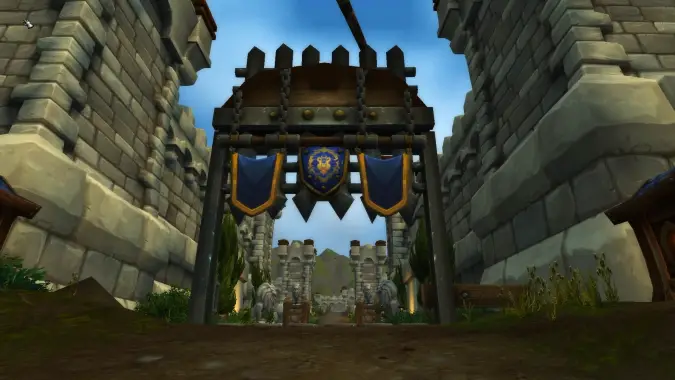Know Your Lore: The rise of the Arathi

One of the benefits of Legion and its Artifact system was that it brought a lot of older lore about Azeroth and its universe to life in new ways. As a player who loves that kind of storytelling, I was very excited to see that several artifacts dated back to the period before the Sundering, when the ancestors of Humanity arrived in what is now the Tirisfal Glades. We know significantly more about the first days of Humankind, its origins and the figures that brought it to prominence now.
Let’s talk about those plucky Curse of Flesh afflicted baby Vrykul who ended up starting their own people.

A distant and forgotten past
There are a lot of legends about the origins of humanity. Even now, some things are unclear. Humans descend from Vrykul who were affected by the Curse of Flesh. These ancient Vrykul did not react well to seeing their children born smaller and weaker than themselves. Roughly 15,000 years ago, a king of the Dragonflayer clan named Ymiron declared that any such child should be put to death, and the parents of said child would share this fate if they refused to carry it out. Despite this, however, many Vrykul could not bring themselves to strike down their own children. They chose exile.
It’s unclear if these Vrykul traveled south with the Watchers Tyr, Archaedas and Ironaya as many did, or if they followed in his footsteps. Both might even be true — there were clearly Vrykul in the service of Tyr and his allies who came south with him, but others may well have set out in his wake rather than murder their own children. In any case, Tyr’s tomb in what is today the Tirisfal Glades became a settlement for Vrykul. In time, as the Curse of Flesh spread, a nation of humans sprang up in their wake.
These humans only knew scraps of their history — much was lost as their progenitors passed. They knew the lake under which the Tomb of Tyr resided was a sacred place. They had legends of Tyr and his silver hand to provide them with ideals of sacrifice and honor, but their origins were almost entirely lost to them. The Titans, the Curse of Flesh, the Titan-Forged races — all of these concepts were lost to these early humans, who would descend into barbarism in the region that is today known as the Eastern Kingdoms.
Thousands of years passed while the Kaldorei raised an empire across ancient Kalimdor, while Ulduar slept fitfully in Loken’s grasp to the north, and the descendants of Flesh-Cursed Vrykul lived and died with no memory of where they’d come from.

The Sundering and isolation
Were other pockets of such Vrykul-descended Humans elsewhere in the world? There are a few speculative theories, such as Taran Zhu’s musings on Humans fighting against the Mogu during the Pandaren Rebellion. What we know for sure is that the world as it was fell when Malfurion Stormrage imploded the Well of Eternity and collapsed the central region of ancient Kalimdor into the ocean. It created several continents — Northrend, Kalimdor, Pandaria, and the Eastern Kingdoms — as well as island chains such as the Broken Isles and Zandalar.
The descendants of the Vrykul who’d fled Ymiron’s decree escaped the fate of the Dragonflayers. Those Vrykul who’d remained in Northrend were placed into a magical sleep by the Dragon Aspects at Tyr’s request just before that Watcher fled. Safe in their isolated home, Humans escaped the destruction that followed the Sundering.
Whether they encountered the ancestors of the High Elves who arrived near Tirisfal or not is unclear. Clearly Humans knew of the Elves, but there’s little history of any conflict between them at this time. What is clear is that while the Elves and Trolls went to war over the rich forests of Eversong to the north, Humans spread far and wide through the area. They settled in what we today call the Arathi Highlands in great numbers.
In the Highlands, brawling tribes of Humans made war on one another for generation after generation. A few of the skills of their ancient forbears had been retained, as had a few of the tools and weapons left behind, passed down as heirlooms and treasured keepsakes. The size of these items made them difficult to wield in some cases, but their materials and forging techniques made sure they were prized. Something like a civilization sprang up among the disparate tribes of humanity, but it might never have unified if not for the Trolls. One of these tribes was called the Arathi.

A long cradle rocks
Thousands of years after the Sundering, the Trolls of Zul’Aman finally gained enough strength to push back the High Elves of Silvermoon. While the Arathi held no particular love or hate for the Elves, they’d suffered at the hands of the Trolls. They claimed much of the territory the Humans lived in for their Amani Empire. Thoradin, leader of the Arathi Tribe, ordered his people to keep clear of the Trolls.
Thoradin realized that by itself, his tribe could not survive if the Trolls became ascendant against their ancient Elven rivals. Once free of that conflict, the Trolls would push south to reclaim the areas that they’d once held. The barbarous Arathi people were fearsome warriors, but they were simply outnumbered and outclassed by the might of the Amani.
Thoradin held a few advantages. One was his keen strategic mind. Another was the ancient blade Strom’kar, an artifact left behind by the Vrykul forebears of the Arathi and all Humanity. Seeing that Humanity needed to unite to survive, Thoradin began marrying off his children to tribal leaders or making pacts of friendship when possible.
One such leader, Lordain, lived in the region of Tirisfal and joined the Arathi in order to spread his religious beliefs, gained from years spent guarding the site of Tyr’s tomb. Others required Thoradin to conquer them — in one such case, Thoradin used Strom’kar in a duel against the Alteraci tribal leader Ignaeus, defeating him and securing both his loyalty, and the loyalty of his tribe.
But the greatest threat was still in the future. Thoradin succeeded in uniting Humanity under his banner through violence, diplomacy, arranged marriages and even outright bargaining. But his new ‘Empire’ was still fractured and worse, lacked much of the knowledge of older civilizations. The few bits of lore left behind by long-forgotten Vrykul ancestors would not be enough to secure the safety of his people. Thoradin sought an edge as keen as that of the Vrykul greatsword that had brought him that far.
Next week, we talk about how he found it, and his ultimate fate.
Please consider supporting our Patreon!
Join the Discussion
Blizzard Watch is a safe space for all readers. By leaving comments on this site you agree to follow our commenting and community guidelines.
 @MatthewWRossi
@MatthewWRossi



